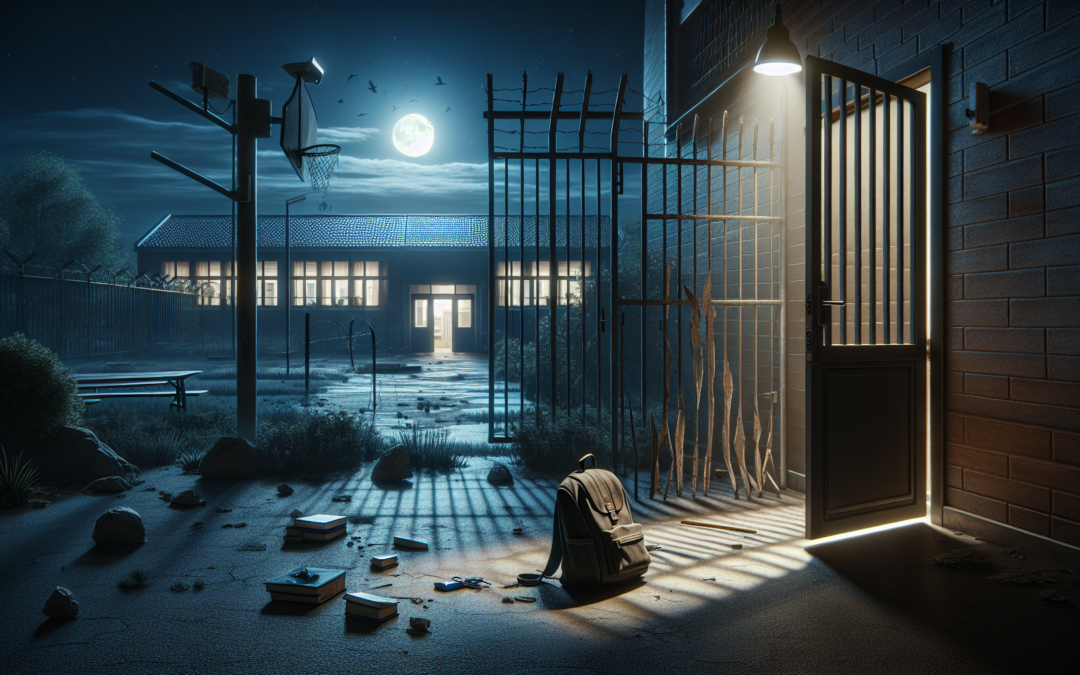We Stand Guard: Upholding Safety Within Fragile Sanctuary
In a society founded upon principles of liberty and justice, the roles of our men and women in blue have never been more pivotal. As protectors of public safety, law enforcement officials find themselves balancing the scales of freedom—with all its inconsistencies and complexities—against an increasing chorus demanding security and peace of mind within our communities. Nowhere is this dichotomy more pronounced than within the sacred walls of our educational institutions.
The Brave Few: Bearing the Weight of Responsibility
The process of becoming a police officer involves a transformation—a leap into a world where each decision holds tremendous weight and reverberates across countless lives. But for many officers, their dedication remains unwavering. Each morning, officers across the nation don the badge and uniform, embracing the profound, often invisible, burden of accountability woven into the fabric of their esteemed positions. Each patrol car dispatched near schools stands as a silent promise that officers are ready to leap into action to preserve the serenity students deserve.
William Taylor’s attempt to press the boundaries of the First Amendment by intruding upon protected grounds tested this promise, pushing law enforcement to the forefront and challenging their modus operandi in real-time scrutiny. Even if Taylor’s intentions were unusual, these moments of uncertainty serve as grim confirmations that readiness to react must always meet the unpredictability of intrusions, regardless of scale or intent.
Devotion and Vigilance: Hallmarks of Preparedness
The proactive measures taken by school resource officers—those silent, steadfast sentinels posted within nearly every school across America—highlight a critical dimension of law enforcement’s mission. This specialized cadre of officers, beyond serving as guardians, personify a proactive mindset aimed at fostering a resilient network of safety. They are living testaments to the enhanced bond between community policing and educational environments. It is a collaboration that seeds familiarity, trust, and respect, essential components of effective deterrence.
Preparedness doesn’t originate solely from manpower or strategic patrol placements; it stems from an unwavering commitment to the art of anticipation. The instinctual need to perceive invisible threats before they materialize plays out in rigorous drills, continuous training, and state-of-the-art communication technologies officers integrate. The fervency displayed during the incident with William Taylor, caught keenly on camera (source), underscores the immediate readiness and composed dispatch demanded under pressure. Such episodes not only strengthen public confidence but reaffirm law enforcement’s dedication to being ever vigilant.
Challenges: Policing in Tight Frameworks
Nonetheless, upholding safety isn’t impervious to challenges. Officers face ethical dilemmas, legislative constraints, and even public misconceptions, especially when their actions summon wider media attention. In cases like William Taylor’s, law enforcement dances an intricate choreography of constitutional liberties with protecting public sanctity, often under close public scrutiny. The echoing call to action from various media outlets emphasizes the complexity officers and institutions routinely manage as they navigate these morally complex forums (source with community).
It is this intersection of foundational U.S. liberties and community safety roles where the unwavering resilience of our officers resonates. They must remain adaptable to the varied personas they engage, all the while critically fine-tuning their strategies to evolving typologies representing conceivable threats.
In Steps Measured and Mindful: Constructing Safe Arenas for Everyone
There is no single, unified equation to counter unforeseen disruptions while preserving undisturbed learning environments; rather, it is constructed incrementally within every cooperative civic interaction. The importance of vigilance exercised by officials doesn’t just rest in immediate action but from measures promoting preventative education and community dialogues that underline mutual safety responsibilities shared by all.
Resilience and trust within societies breathe and spread from initiatives embedded in mutual respect. After all, any sustainable endeavor to enhance school security remains a multi-layered, collective promise involving stakeholders at every level. The same law enforcement can engross the digital corridors, encouraging parents and societal figureheads alike to support surveillance programs and advocacy groups to supplement police work. Model programs nationwide, as circulated in networks such as the law enforcement-focused aficionados here, offer glimpses of systemic improvements likely to emerge.
Conclusion
Together, our law enforcement and community members create battlements of intention and vigilance within educational institutions, forming a covenant fortified by trust. Every uniformed pledge represents defense not through undue force, but in perseverance—a bulldog spirit harnessed transparently to transform uncertainties into domains of potential. As respectful protectors, the challenges ahead serve only to deepen their solemn vows: guarding future generations against shadows and securing their dreams with dignity, thereby ensuring solemn sanctuaries remain untarnished by external clamor and commotion, now and always.

Recent Comments